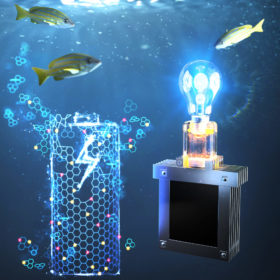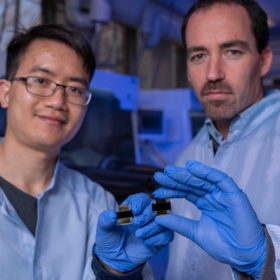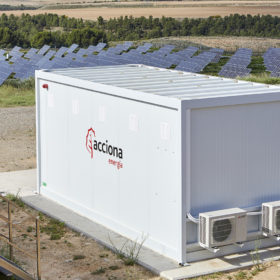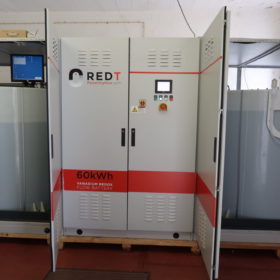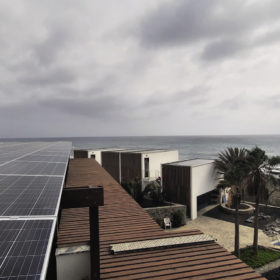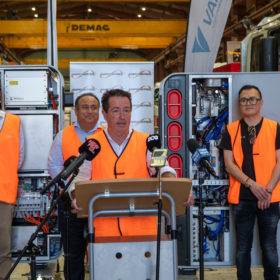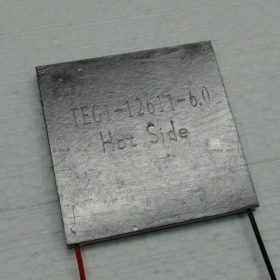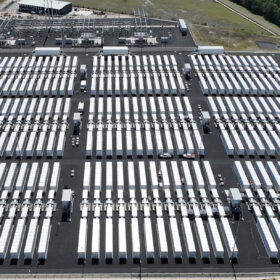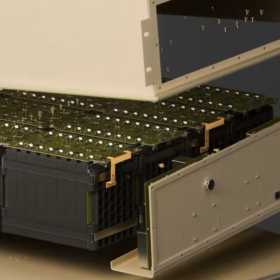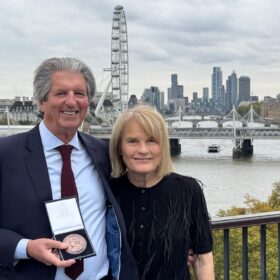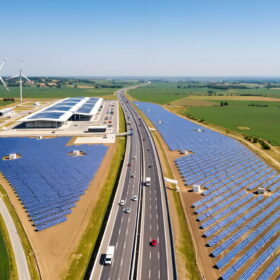High performance seawater batteries based on novel anode material
Scientists in Korea have developed an efficient synthesis route to produce a novel co-doped anode material for rechargeable seawater batteries. They developed a one-step plasma-in-liquid process to synthesise nitrogen and sulfur co-doped carbon-based anode material, which displayed great potential for seawater batteries.
Australian researchers claim solar cell efficiency record
Researchers at the Australian National University say they have set a perovskite solar cell efficiency record at 22.6%. This efficiency, however, appears to be lower than that achieved in January by a group of Swiss and Korean researchers who used quantum dots to achieve an efficiency of 25.7% in an area of 0.08cm2 and 23.3% in 1cm2.
Australian zinc-bromide batteries chosen for Acciona’s Spanish testing field
Gelion’s zinc-bromide Endure batteries will undergo commercial tests at the 1.2 MW Montes del Cierzo testing field Spanish renewable energy company Acciona Energía operates in Navarra, in the north of Spain.
Natural hydrogen exploration ‘boom’ snaps up one third of South Australia
South Australia has found itself at the heart of a 21st century gold rush, though this time for naturally occurring hydrogen. Since February 2021, 18 exploration licenses have been granted or applied for in the state by six different companies searching for natural hydrogen.
Perth ocean energy company gets funding boost from Japanese shipping giant
Western Australian ocean energy company Bombora Wave Power has received an investment of $6.74 million to deliver its pilot projects and commercialise its technology from one of the world’s largest shipping companies, Japan’s Mitsui O.S.K. Lines.
Vanadium redox flow battery to control extreme power ramps in rooftop PV
Researchers in Portugal have tested how vanadium redox flow batteries can be integrated with rooftop PV to balance the system load to ensure firm power output. They proposed a 5 kW/60 kWh battery configuration for a 6.7 kW building-integrated PV microgrid. According to their findings, the battery can be used in different energy management strategy scenarios to better complement solar photovoltaic generation.
Hydrogen vehicle maker Hyzon links with RACV to establish Melbourne headquarters & deliver tow trucks
U.S.-based hydrogen vehicle maker Hyzon has announced Melbourne will soon be home to its Australian headquarters as part of a newly formed partnership with RACV, which will see the pair develop a purpose-built facility for Hyzon out of RACV’s Noble Park operation in the city’s south east.
Sunday read: Liquid light
Once thought of in a niche sense, the solar-water nexus is a rapidly expanding network of applications. They include practical tools capable of solving persistent issues like water scarcity, as well as newly pressing issues like overcoming the water challenge of green hydrogen production. Blake Matich looks at such applications here in Australia and abroad.
Weekend read: Lavo green hydrogen battery gets $5 million boost from NSW government
Lavo’s hydrogen battery technology has found monetary support from both Australian and international investors in the last year, as well as public support which has continued this week with the announcement by the New South Wales government of $5 million in funding from the Regional Job Creation Fund to boost hydrogen manufacturing jobs in the Hunter Region.
Coupling photovoltaics with thermoelectric cooling
An international research team has investigated how solar could be combined with thermoelectric coolers (TECs), which are small solid-state heat pumps used either for heating or for cooling. A system was built with six solar panels, an air duct system, four batteries, a charge controller, TECs, an inverter, heat sinks, a test chamber, and condenser fans.
